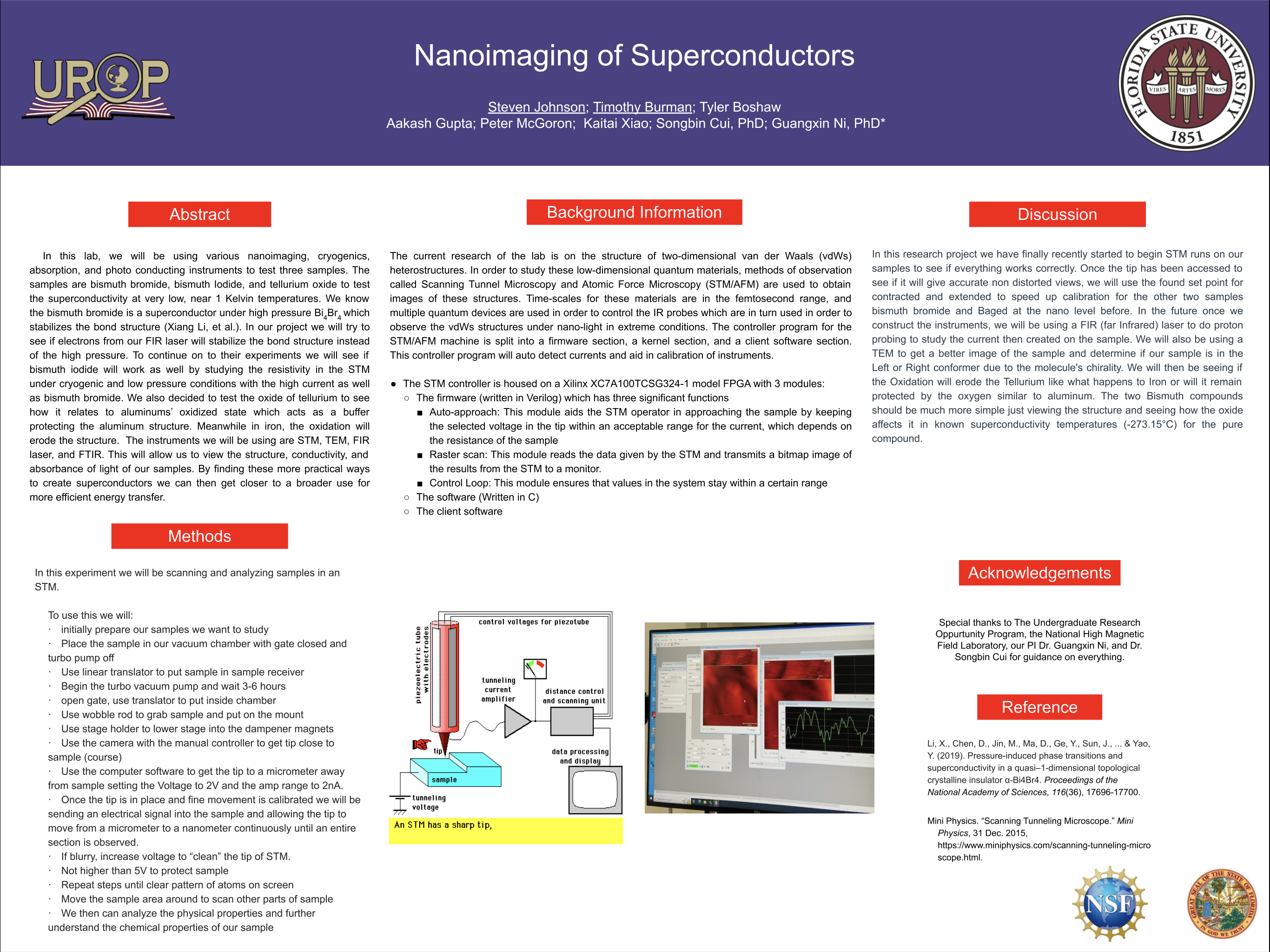Research Symposium
23rd annual Undergraduate Research Symposium, April 6, 2023
Steven Johnson Poster Session 3: 2:45 pm - 3:45 pm/ Poster #392

BIO
Hello, my name is Steven Johnson! I am a Tallahassee local who really enjoys science. I was drawn to optics when studying in physics and was delighted at the opportunity UROP created to join Dr. Ni's lab. I hope to excel in the area of optics for future use as an MD/PhD. This would allow me to combine my love for physiology, organic chemistry and physics. I would really like to eventually study better medical treatments for Endocrinology specifically in the pancreas whether that be cancer based or diabetic based. Since both have effected many of my family members lives, this and a desire to save lives have fueled my passion.
Nanoimaging of Superconductors
Authors: Steven Johnson, Dr. Guangxin NiStudent Major: Exercise Physiology
Mentor: Dr. Guangxin Ni
Mentor's Department: Physics Mentor's College: National University of Singapore Co-Presenters: Timothy Burman
Abstract
In this lab, we will be using various nanoimaging, cryogenics, absorption, and photo conducting instruments to test three samples. The samples are bismuth bromide, bismuth Iodide, and tellurium oxide to test the superconductivity at very low, near 1 Kelvin temperatures. We know the bismuth bromide is a superconductor under high pressure Bi4Br4 which stabilizes the bond structure (Xiang Li, et al.). In our project we will try to see if electrons from our FIR laser will stabilize the bond structure instead of the high pressure. To continue on to their experiments we will see if bismuth iodide will work as well by studying the resistivity in the STM under cryogenic and low pressure conditions with the high current as well as bismuth bromide. We also decided to test the oxide of tellurium to see how it relates to aluminums’ oxidized state which acts as a buffer protecting the aluminum structure. Meanwhile in iron, the oxidation will erode the structure. The instruments we will be using are STM, TEM, FIR laser, and FTIR. This will allow us to view the structure, conductivity, and absorbance of light of our samples. By finding these more practical ways to create superconductors we can then get closer to a broader use for more efficient energy transfer.
Keywords: STM, nanoimaging, optics, physics


